
Mauchline is a town and civil parish in East Ayrshire, Scotland. In the 2001 census Mauchline had a recorded population of 4,105. It is home to the National Burns Memorial.

The Drukken, Drucken Steps or Drunken Steps were stepping stones across the Red Burn in Irvine, North Ayrshire, Scotland and are associated with Scotland's national poet, Robert Burns. Drukken is used on the commemorative cairn plaque, but Druken or Drucken may also be used.
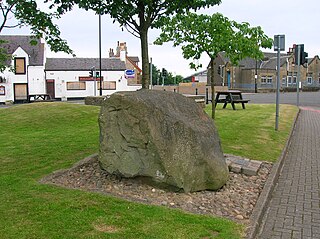
Monkton is a small village in the parish of Monkton and Prestwick in South Ayrshire, Scotland. The town of Prestwick is around 1+1⁄2 miles south of the village, and it borders upon Glasgow Prestwick Airport.

Ellisland Farm lies about 6.5 mi/10.4 km northwest of Dumfries near the village of Auldgirth, located in the Parish of Dunscore, Dumfries and Galloway, Scotland. The complex is a museum in the farm Robert Burns built, lived in and farmed from 1788 until 1791.

Orangefield House, previously known as 'Monkton House', was located near the village of Monkton, Ayrshire in the Parish of Monkton and Prestwick in South Ayrshire, Scotland; the settlement borders upon Glasgow Prestwick Airport, for which it served for a while as the control tower.

John MacKenzie (c.1755–1837) was a Scottish army surgeon. He was a native of Ayrshire, where he married Helen Miller (d.1827), one of the "Six proper Mauchline belles" who is buried in Irvine's Old Parish church. He was a member with Robert Burns of the St James Lodge, Tarbolton. His house in Mauchline is now the 'Burns House Museum,' run by East Ayrshire Council. MacKenzie wrote "Origin of Morals and Common Sense."
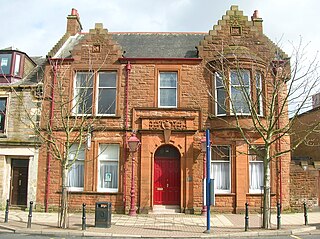
The Irvine Burns Club, based at the Wellwood Burns Centre & Museum, was founded on 2 June 1826 and is one of the world's longest continuously active Burns Clubs. At least five personal friends of Robert Burns were among the group of local gentleman, whose idea it was to form the club. Irvine in North Ayrshire is an old market town and port situated on the west coast of Scotland, approx 14 miles north of Ayr.

The remains of the old castle of Kingencleugh or Kingenclough lies close to east of the town of Mauchline, East Ayrshire, in the old Barony of Mauchline off the A76. The castle is Category B listed.

Haugh or The Haugh is a small village or hamlet in East Ayrshire, Parish of Mauchline, Scotland. The habitation is situated about two and a half miles downstream from Catrine, on the north bank of the River Ayr. The River Ayr Way runs through the village.

Robert Burnes or Robert Burness was a paternal uncle of the poet Robert Burns. He left the family farm of Clochnahill or Clokenhill in Kincardineshire with his younger brother William Burnes, and found work at the Lochridge or Lochrig limestone quarries and lime kilns that lay near Byrehill Farm near Stewarton. He was a teacher, a gardener later in life and a land steward on the nearby Robertland Estate, possibly through the influence of his nephew. Robert Burns referred to his him as Poor Uncle Robert upon his death in 1789.
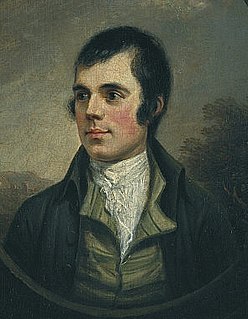
Burns Clubs exist throughout the world to encourage and cherish the memory of Robert Burns, to foster a love of his writings and generally to encourage an interest in the Scots Language and Literature. An emphasis on encouraging the young to take an interest in Burns is found in most clubs through poetry, singing and other competitions. Once mainly existing as 'male only' clubs in the mould of the Tarbolton 'Batchelor's Club' most now welcome women as fellow members. Ladies Burns Clubs also exist such as the 'Irvine Lasses' that was established in 1975; it has appointed several male 'Honorary Lasses'.

The Robert Burns World Federation is a literary society based in Kilmarnock, Ayrshire, Scotland, aimed at educating the public about the life, poetry and works of the poet Robert Burns. It is a Scottish Charity and a company limited by Guarantee. The Federation links existing Burns Clubs and similar groups, giving a unique number to affiliated Clubs, which is then used by them in their promotion and identification. Their ongoing intent is to provide a way for clubs to link together and enjoy the mutual benefit of association, communication and shared mission. It was founded in 1885
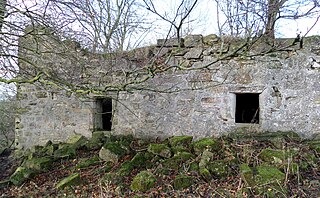
Haining Place or The Haining in the Parish of Kilmarnock lies near an old fording place across the Cessnock Water in East Ayrshire, Parish of Riccarton, Scotland. Hanyng (sic) was the caput or laird's dwelling of the Barony of Haining-Ross with a tower house or keep located in a defensive position on a high promontory of land, half encircled by the river. Later Haining Place may have been a dower house, then a tenanted farm, finally being used as farm workers accommodation. Haining Place is now a ruin following a fire. The old farm of Haining Mains is still located nearby.
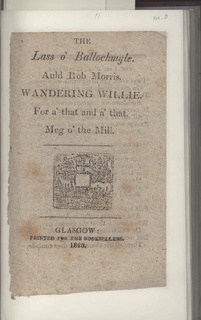
Wilhelmina Alexander (1756–1843), was born at Newton House, Elderslie, Renfrewshire. She was the 4th daughter of Claud Alexander of Newton and Joanna, daughter of Alexander Cuninghame of Craigends. Her lasting fame derives from being Robert Burns's 'The Bonnie Lass o'Ballochmyle' in the song of that title. Robert Burns was accustomed to taking walks and musing over his poetry and songs in the Ballochmyle Estate next to the River Ayr when he caught sight of her one-day and composed the song in memory of the event. She refused publication at the time and Burns never forgave this perceived slight on his genius, Wilhelmina never married, she did however treasure the letter and the manuscript of the song until her dying day.

Kate Kemp of Barskimming lived with her father at the Bridge House on the northern side of the single span Barskimming Old Bridge, River Ayr, Scotland. Both Robert Burns and James Andrew, the miller at Barskimming Mill, had a romantic interest in her and one visit led to the composition of the poem and dirge "Man was made to Mourn".
Adam Armour (1771–1823) was the younger brother of Jean Armour and therefore the brother-in-law of the poet Robert Burns. In addition, being married to Fanny (Frances) Burnes, he was also related to the poet through his father-in-law 'Poor Uncle Robert', who lived at Stewarton.
Alexander Tait, Sawney Tait or Saunders Tait was a tailor, a published poet and also a contemporary of Robert Burns who he knew well. Tait was also well acquainted with the published poet and close friend of Burns, David Sillar. Sawney spent much of his life in Tarbolton where he was an active member of the community. His poems were exhibited in the 1896 Burn Exhibition, a copy being loaned by the Mitchell Library. Alexander was generally known locally as 'Whip-the-cat' an old expression that referred to itinerant tailors, etc. who went from door to door to do work for others.

Ballochmyle House is an 18th-century country house near Catrine in East Ayrshire, Scotland that was the seat of the Alexander of Ballochmyle family. From 1939 to 2000, it was the location of Ballochmyle Hospital operated by NHS Ayrshire and Arran. Following a £5m restoration that began in 2009, it was converted to luxury flats.
The Lands of Dallars or Auchenskeith (NS463337) form a small estate in East Ayrshire, Hurlford, Kilmarnock, Parish of Riccarton, Scotland. The present mansion house is mainly late 18th-century, located within a bend of the Cessnock Water on the site of older building/s. "Dullers or Dillers" was changed to "Auchenskeith" or "Auchinskeigh" (sic) as well as other variants and then the name reverted nearer to the original form as "Dollars" and then finally "Dallars". Dallars lies 3.25 km south of Hurlford.

John Burns (1769–1785) was the youngest brother of the poet Robert Burns and the last son born to William Burness and Agnes Broun. John was born at Mount Oliphant Farm on the Doonholm Estate near Alloway on the 12 July 1769. He was christened circa 21 July 1769 by Rev. Rev William Dalrymple.


















